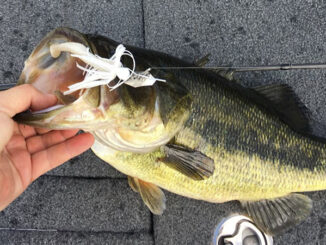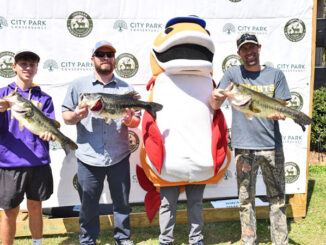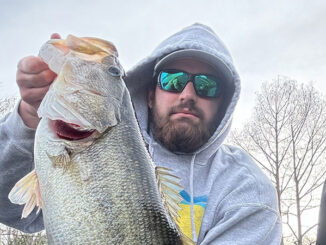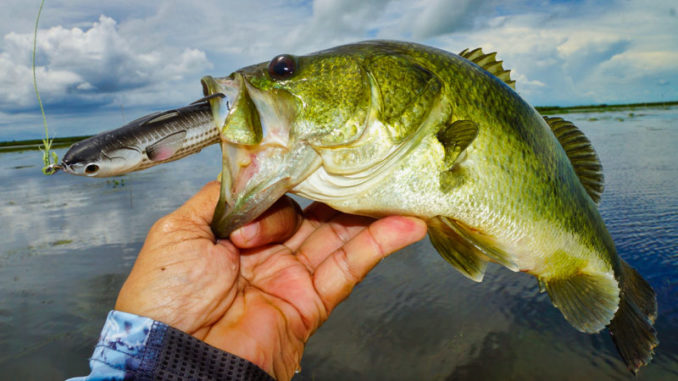
Kayakers can find hungry bass and redfish skirting the waters of the muddy Mississippi.
Normally when talking about a marsh fishing trip in southeast Louisiana, anglers mean catching speckled trout and redfish. However, with seemingly permanent salinity changes in many areas, marsh fishing increasingly means fishing for redfish and bass (called green trout by many).
While Venice’s unique proximity to the Gulf of Mexico and the mouth of the Mississippi River has always experienced such a mix, other areas of Plaquemine’s Parish are joining suit.
On the east side of the river, a crevasse developed several years ago that was named Mardi Gras Pass to coincide with the day it was discovered. Since then, this natural diversion has sent river water into many areas and changed the mix of habitat and common species.
Point-a-la-Hache
Although there are not many public launch areas, kayak anglers can put in at Beshel’s Marina in Point-a-la-Hache and take the back levee canal to access a large complex of ponds and bays.
The river water keeps the area muddy-looking often, but lots of submerged aquatic vegetation helps filter the water. Look for coves and pockets where the grass thrives and the water gets clear fast.
Where to go
When the river is high, the water in the area is naturally fresher, many kayakers head north. After a mile, the back levee canal leads to a pipeline that kayakers can use to get into Bay Schayot, Bay Caquin and several bayous and pond complexes. If the river is low, go south in the back levee for about half a mile to paddle into Felicity Bay.
On a recent trip with the high river, reds and bass were located in the clearer ponds around Bell Bayou. Early in the morning, topwater baits worked over grass beds brought explosive action from both bass and redfish.

Weedless topwater baits like a LiveTarget Hollow Body Mullet and plastic frogs worked well by crawling them across the large expanses of grass.
As the sun came up, fishing the deeper edges of the grass with spinnerbaits and gold spoons also produced both bass and reds. While speckled trout may also be caught in the same areas and on the same lures, there is a better chance of catching them later in the summer when the river has gone down and the salinities rise.
Fortunately redfish are extremely freshwater tolerant and mix and mingle with bass in the area. Many redfish lures were born out of the bass fishing world and can be used interchangeably to catch both.
Baits that work
However, redfish have strong crushers that can wreck lighter lures.
When fishing these areas, it is best to use lures with salt-water grade construction to avoid having them destroyed when a red hits instead of a bass. Heavier wire, split rings, and hooks are usually the main construction difference. However, the general categories of topwater, spinnerbaits, spoons, soft plastics and crankbaits all fool bass and redfish equally well.
The Texas-rigged plastic worm is a staple for bass fishermen. However, it also works well on redfish. The weedless design and quiet entry keeps from spooking reds that are hiding in thick cover.
Grass is the key for finding co-mingled bass and reds. Even though it may seem impenetrable, the fish use pathways below to easily travel through. Working your lures along the edges and through small holes and cuts is the key to getting in the strike zone.
Venice
The bass fishing in Venice has been legendary for years, but many think of the river and its many large passes, which are no place for a kayak. However, combat launching off of Tidewater road provides access to the famed Wagon Wheel and nearby bays.
While the wheel area has greatly eroded over the years, it still provides good areas for both bass and redfish. Some areas have silted in which prevents access by powerboats, but is not an issue for kayakers.
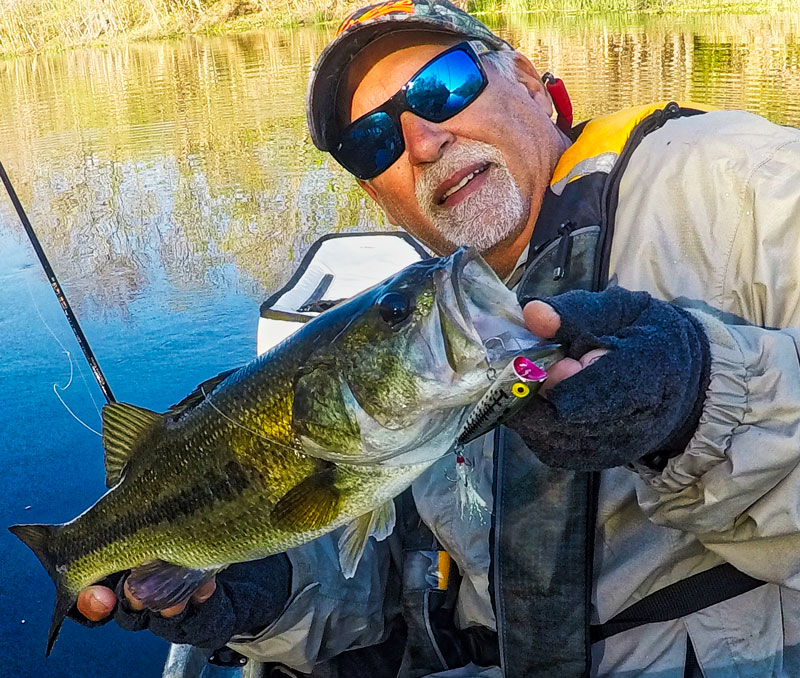
Large expanses of Roseau cane provide cover for a variety of baitfish which in turn keeps hungry bass and reds in the area. Flipping plastic baits into the edges of the canes is a great technique to catch both species.
All lures and techniques mentioned above also work great in this area. Also, don’t overlook using a popping cork with Gulp or your favorite plastic tail.
The good news is that there really isn’t a big learning curve for those kayakers that come from the bass fishing side or those that come from the red fishing side. Use your standard techniques and you can easily put together a nice stringer of both.
Author’s Note:
At the time of this writing, the Mississippi River is extremely high and at or above flood stage for many Louisiana areas. The Bonnet Carré Spillway was recently opened to help reduce water levers and relieve pressure off of the levees. Areas mentioned in this article are currently receiving high volumes of fresh water which may adversely affect fishing. You may need to paddle further away from the river for better opportunity to find clearer water.
